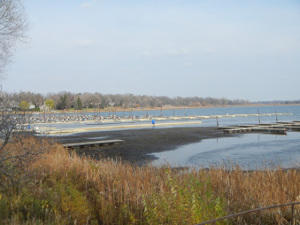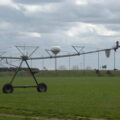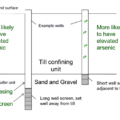[ad_1]
Both precipitation and groundwater withdrawals, among other factors, influence lake-water levels in the northeast Twin Cities metropolitan area, and the extent of these changes vary among lakes, according to a new U.S. Geological Survey study.
Scientists with the USGS and partners studied groundwater and lake-water exchanges in White Bear Lake, Big Marine Lake, Lake Elmo and Snail Lake during 2003 through 2013, a period of increasing urbanization and declining water levels for some lakes in northeast Twin Cities metropolitan area. They found that long-term declines in lake-water levels can be caused by increasing groundwater withdrawals or decreases in precipitation, and that increases in groundwater withdrawals during dry periods exacerbate water-level declines.
“Our study helps explain changes in water levels in several lakes in the northeast metropolitan area that were recently below normal, such as White Bear Lake,” said Perry Jones, a USGS scientist and lead author of the report. “Results from the study also allow managers to assess the long-term effects of groundwater withdrawals on lake water levels, especially during drought.”
Previous USGS studies showed, and the new study confirms, that lake water seeps into underlying aquifers in the northeast metro area. For the new study, the scientists developed a groundwater-flow model to examine how significantly this seepage affects long-term water levels in the four lakes.
The model showed that closed-basin lakes, which are lakes not connected to other lakes and streams such as White Bear Lake, Big Marine Lake and Snail Lake, might be more vulnerable to changes in precipitation and groundwater withdrawals. Specific findings include:
- The effect of groundwater withdrawals on closed-basin lakes depended on how permeable sediments are near and under the lakes, the number of wells and pumping rates near the lakes and the wells’ depths as compared to lake depths; and
- A 30 percent increase over current groundwater withdrawals would affect Snail Lake and White Bear Lake water levels more than Big Marine Lake levels, because current groundwater withdrawals near Big Marine Lake are relatively low.
The study also showed that evaporation from lake surfaces and flow of lake water to underlying aquifers are the largest losses of water from the four lakes. According to the model:
- Evaporation and lake-water flow to underlying aquifers accounted for 97 to 100 percent of water losses in White Bear, Big Marine and Snail lakes;
- These factors accounted for 65 percent of lake-water losses for Lake Elmo;
- White Bear Lake and Lake Elmo, the deeper lakes, lost more water to underlying aquifers than to evaporation, whereas Big Marine Lake, a large lake, lost more water to evaporation; and
- Snail Lake is a small, shallow lake that lost more water to underlying aquifers than to evaporation.
“Based on our findings, many Twin Cities lakes should be considered water sources to aquifers, as well as to numerous wells withdrawing water from the aquifers,” Jones said.
The USGS partnered with the Metropolitan Council and the Minnesota Department of Health on the new study, which was directed by the Minnesota Legislature.
For more information about water research in Minnesota, please visit the USGS Minnesota Water Science Center website.
[ad_2]
Source link
- Warmer water could cool Montana’s trout fishing economy - September 7, 2022
- Water Released from Crystallizing Magma can Trigger Earthquakes in Yellowstone - September 5, 2022
- Thermal Infrared Remote Sensing at Yellowstone 101 - August 29, 2022






